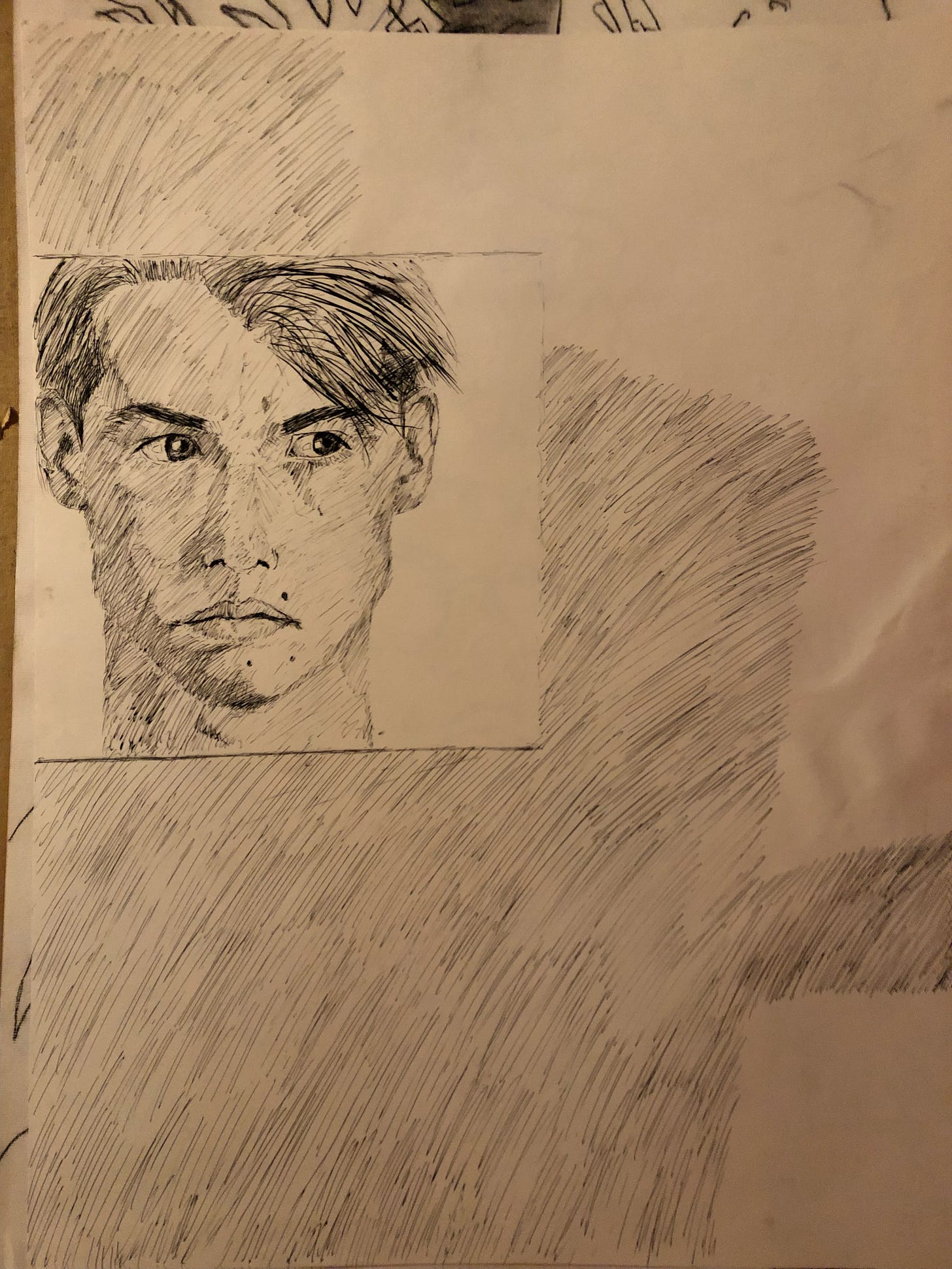Hellllooo GUT peeps.
As of today, we’re half way through our Summer Visiting Artist series. So far you’ve heard from the incredible Gretchen Rubin and Austin Kleon. This week I’m over the moon to introduce our 3rd Visiting Artist: the phenomenal author and “occasional sketch artist” Alexander Chee!
Alexander Chee is the bestselling author of the novels Edinburgh and The Queen of the Night, and the essay collection How To Write An Autobiographical Novel. His essays and stories have appeared in The New York Times Magazine, T Magazine, The Sewanee Review, and the 2016 and 2019 Best American Essays. He was guest-editor for The Best American Essays of 2022. He also writes a gorgeous substack, The Querent, where he talks about writing, teaching, things he’s reading, thinking about and general observations. Highly recommend subscribing.
Turns out, Alexander Chee is also a drawer! He told me he likes to draw while traveling, to calm down, to observe more deeply. And like many of us here at the Grown-Ups Table, he loves to make blind contour drawings (that’s when we draw something without looking at the page.) Alex, you’re a drawer after my own heart.
Below are some of his personal diary-sketches that I just had to include. Look at the line work on that coastline. You can tell how closely he is looking as he draws, and how much more he sees by slowing down.
Here is a sphinx!
A confident contour drawing of a kettle! (Ellsworth Kelly would be proud!)
And below is a self portrait from his college days. His parallel hatching here is next level. Also, I think it’s interesting to compare this earlier drawing to the ones above that he did later in life. Has his line changed as he’s gotten older? How? And how have you yourself noticed your lines change over time? And what that say to you about yourself, if anything?
I love to bring writers in to visit us at the GUT. I’m curious how the way they apply their attention to the world is similar or different than the way we drawers do. I’m curious to learn more about they move through the world paying attention to detail, jotting down observations in a notebook, and then how they apply what they’ve noticed to their writing.
I’m also interested in how image informs their text and text inform an image, like in the drawing below. How do writers integrate drawings and writing into their day to day life. Maybe sketching, or doodling, and making to do lists before a big move, like in this moment:
Thank you for opening up your sketchbook to us, Alexander!
As I hand the keys to Mr. Chee, I am grateful for the leap writers (and artists working in all mediums) take when they visit the Grown-Ups Table. These mixed media collaborations open up new ways of thinking and push our head, hands and hearts in new directions. I’m no longer surprised when I learn that my favorite writers of words often are also drawers of images. And vice versa! There is more overlap between our art forms than we may think.
Thanks again for joining us this week, Alexander, and thank GOODNESS for all of us that you do the writing you do… and the drawing, too!
Thoughts on Drawing by Alexander Chee
A very long time ago, in college, I was determined to be an art major. And one of my favorite drawing exercises from class, one of the few I really remember, involved taking several figure drawings and combining them into a single fictional tableau.
Drawing from the imagination is where I began as a child. First I would draw the dresses out of my mother's fashion magazines and then make up my own. I drew horses and eventually moved to drawing pegasi and unicorns and eventually, a pegasus unicorn, all the time. I was obsessed with wings in particular and liked to draw them in great detail, greater than any other aspect of the creature.
Timed figure drawing is a fun exercise to do at any time, they become like sprints.
To prepare you could do a series of timed quick sketches of someone or something or some animal, pet, insect—for this one here, which I saved from class because I liked it but also because I was, well, enamored of the model from class. He was a beautiful runner with ear-length dark hair and deep-set eyes. I used four sketches of him to create something that looks like a beach scene, say, at Fire Island or Provincetown. At the time I made the drawing, the year was 1986, I was coming out of the closet and I hadn't done anything like going to a beach full of attractive gay men, so I was drawing a fantasy.
This exercise asks you to imagine how these figures are in relationship to each other.
Alexander’s Drawing Assignment for the GUT Community:
Keep reading with a 7-day free trial
Subscribe to DrawTogether with WendyMac to keep reading this post and get 7 days of free access to the full post archives.











